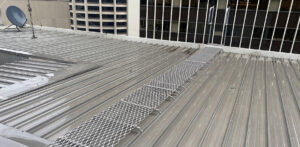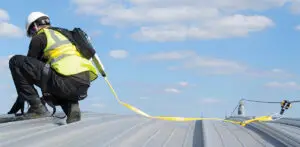Personal protective equipment (PPE) is an important part of workplace safety, but where does it sit compared to other forms of risk mitigation?
When it comes to managing risks in the workplace, the most common tool used to walk business owners, managers and team members through the process is the hierarchy of controls.
But what is it? How does it work? And where does PPE sit?
What is the hierarchy of control?
The hierarchy of control is a framework for working out how risks to safety and health can be controlled and mitigated.
Under work health and safety legislation, persons conducting a business or undertaking (PCBU) are required to do what is “reasonably practicable” to ensure ongoing health and safety of those under their duty of care.
(Who the PCBU is at any given worksite can sometimes be hard to work out. To see how there can even be multiple PCBUs on a site, check out our blog on duties of care in the contractual chain).
What is “reasonably practicable” can be determined using the hierarchy of controls. Commonly represented as an inverted pyramid, the hierarchy provides different levels of controls that can be applied to mitigate a risk.
The controls are presented in an order from most effective to least.
What are the controls?
There are slightly different takes on the hierarchy of control circulating. While each is substantially similar, and rates the controls in the same order, there can be additions or subtractions, compilations, and separations of controls within each different version.
The version of the hierarchy here is taken from the learner guide to HSE’s RIIWHS204E Work safely at heights training course.
Eliminate the risk is the first, and most effective, control that can be used. This completely removes the risk from the workplace. For example, locating plant on ground level rather than rooftops so that there is no need to work at heights.
Substitute the risk involves replacing the risk with something less hazardous. In the construction industry, an example of this control was banning the use of asbestos containing materials and replacing them with different products. Or the switch to unleaded petrol from leaded.
Isolate the risk by separating it from other work areas. Examples of this could be installing screens around welding bays so other workers are not exposed to flashes.
Engineering controls can be used to provide a way for work to be undertaken in the risk area safely. For working at heights situations this can include the installation of walkways, guardrail, static lines, and permanent anchor points.
Administrative controls include things like safe work procedures, warning signage and other documents that a site can have workers read and work by.
Finally, there is personal protective equipment, or PPE. PPE includes items like hard hats, harnesses, breathing apparatus, protective glasses, and masks. This is the least preferable solution for risk control.
Why is PPE at the bottom?
There are good reasons why personal protective equipment is considered something of a last resort when it comes to mitigating risks and ensuring workplace safety.
Requiring the use of PPE is an acceptance that the risk cannot be fully mitigated and that a worker is going to be placed at some risk.
While the other control measures in the hierarchy work to remove the risk or isolate it away from workers.
Using PPE means that a worker needs to enter a high-risk area to complete a task. It is a direct response to the risk and the last line of defence for a worker.
Working on the whole hierarchy
Creating a workplace culture that proactively considers and acts to protect people requires bringing together all levels of stakeholder – from building owners and senior management down to individual workers – and have them consider their duties of care.
It is rarely the case that implementing one single control is enough to mitigate a risk in the most practicable way. A workplace’s approach to safety must be holistic and consider all the available options.
Your partners in protecting people
Height Safety Engineers are the experts in developing comprehensive and holistic plans for workplace safety and risk mitigation.
Discuss your safety needs with our team by calling 1300 884 978 or emailing enquiries@heightsafety.net.





